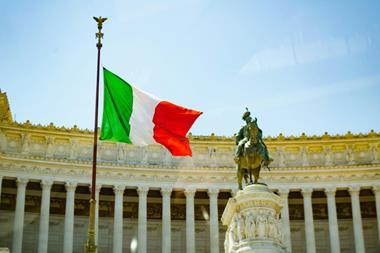The pension fund of Dutch national airline KLM was launched 70 years ago to provide pensions for its pilots, cabin crew and ground staff.
There are three distinct funds to cater for the different and mostly very individual needs of the three groups of employees. At the end of last year the pilots’ fund had assets of e4.2bn, and the ground staff and cabin crew funds e3.8bn and e728m respectively.
In terms of age profile the pilots’ fund is the most mature. “The average age is quite high,” says Justus van Halewijn, head of investment strategy research at Blue Sky Group which manages the KLM funds.
The pilots take a keen interest in their pension schemes, notably the investment performance. “They are also the most risk aware,” says van Halewijn. “They retire at 56 and because they have quite a lot of money in the fund they have a lot to lose. That is why they have the lowest allocation to equities. The pilots’ fund also has downward protection for the equities using derivatives.” It was the pilots that wanted this. “It was not our advice to limit the downside risk of the equities,” he says.
The fund for the cabin crew has a very different profile; it is a relatively young fund in terms of the age profile – as well as in terms of the length of time that it has been in existence. It used to be part of the ground staff fund but was split off because of its distinctive profile: mainly women, a relatively young age range and an early retirement age of 56.
The ground staff is what van Halewijn describes as more of an average pension fund. The age profile is somewhere between the pilots’ and cabin crew’s funds, and there is no early retirement age.
It is interesting to note that in spite of their very different member profiles, asset allocation is an area where the funds also have a lot in common.
“We have introduced a substantial allocation to inflation-linked bonds into all three funds,” notes van Halewijn. “One and a half years ago we researched it and decided that it matches our liabilities.”
The three funds have also been subject to significant diversification. “If you make a diversification your expected return is the same but your risk is much lower,” says van Halewijn.
If we look at equities we see that there has been a move into foreign equities away from the small and hence volatile Dutch stock market. The allocation to equities has remained stable over the years in spite of the recent stock market turmoil. “The long-term view is important,” says van Halewijn. Similarly in fixed income, there has been a move away from Dutch government bonds to corporate bonds, especially high yield, inflation linked bonds and emerging market debt. The trends apply across the three funds.
The funds all incorporate the core satellite approach. “We are very critical as to where we invest actively and where we invest passively,” he says.
The passive part includes UK, US, European and Japanese large caps and government bonds. The active ‘satellites’ are emerging market debt, emerging equities and high yield debt.
Blue Sky Group works exclusively with external asset managers. “We think it is better to outsource, it allows us to stay critical about where to invest passively and actively.”
Has the issue of funding had any influence on investment strategy? Van Halewijn says: “We think that ALMs and taking the liabilities into account are crucial for your investment allocation. That is one of our important investment philosophies.”
The funds have a high level of solvency – about 160% for all three, as measured against the outgoing arbitrary 4% interest rate. This is way above the average for the Dutch market. Van Halewijn explains that while investment policies help, the contributions of the sponsor are also of significance. “The keen interest taken by the pilots in their fund is relevant here: they felt it was important that the contributions of KLM should be stable.”
Some pension funds in the Netherlands that had very high solvencies decided to return money to the sponsor because they thought they had too much funding. “By contrast we did not,” says van Halewijn. “Even in years when we had even higher solvency than now.”
Tactical asset allocation (TAA) has some importance in overall strategy. “We think it is important to add alpha to our expected strategic return by doing TAA,” says van Halewijn: “If you take that into account in your ALMs you will see that even an outperformance of 0.25% a year is a very important contributor in the long run. We do the TAA ourselves. But also all our external active managers have to add alpha. For example, we give the active mandate on emerging market equities to an active manager and look carefully at their performance against the benchmark.”
The board of the fund meets every quarter with the investment advisory board which is hired by the board to advise on all important external investment decisions.














No comments yet